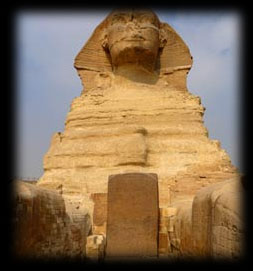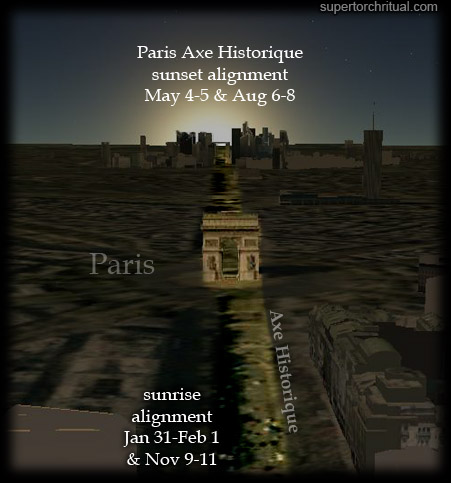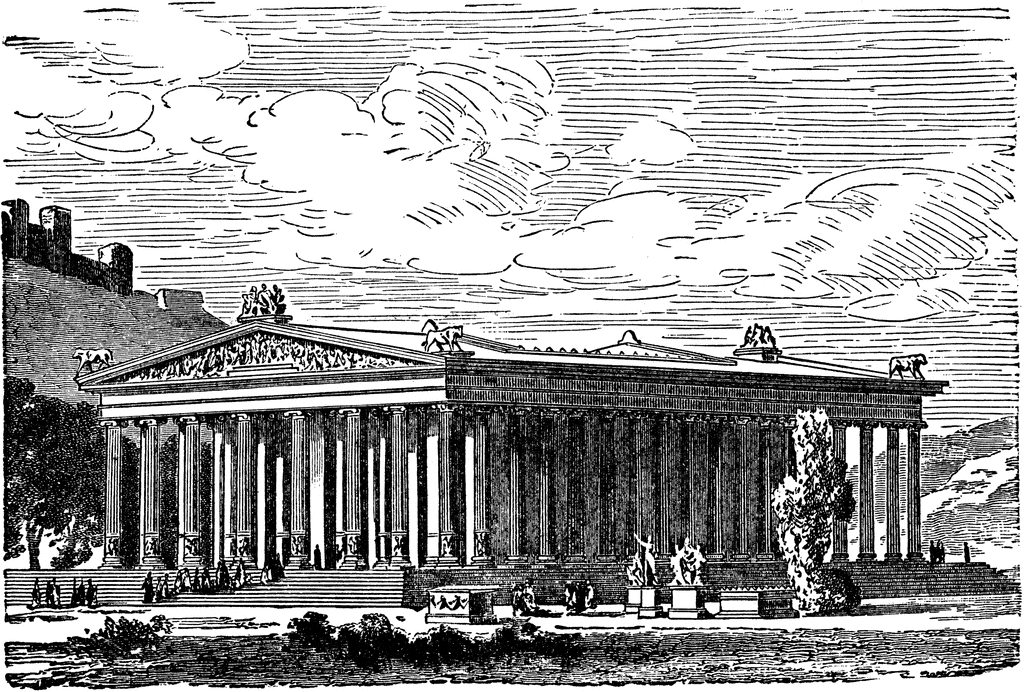|
|
General: DAN/DIANA/TRANSFIGURATION=TRAVEL THROUGH TIME=BACK TO THE FUTURE=LADY DY DIANA
إختار ملف آخر للرسائل |
|
جواب |
رسائل 1 من 80 في الفقرة |
|
|
|
|
|
جواب |
رسائل 66 من 80 في الفقرة |
|
Temple of Diana at Ephesus
“The temple of Diana was the chief glory of the city. The style was Grecian. The length of the ground-plan was four-hundred and twenty-five feet and the breadth two-hundred and twenty feet. The structure was thus four times as large as the Pantheon at Athens. The statue of the goddess was one of the finest works of art ever produced. It was wrought of ivory and gold, and was a marvel of costliness and beauty. The temple was decorated with sculptures by Praxiteles and one of the masterpieces of Apelles. A representation of the temple was stamped on the coins and medals of the city."—Ridpath, 1885
https://etc.usf.edu/clipart/78900/78906/78906_dianatemple.htm |
|
|
|
جواب |
رسائل 67 من 80 في الفقرة |
|
La diosa Ártemis-Diana
La diosa Ártemis-Diana
RESUMEN
La diosa Ártemis (Diana en el mundo romano) fue la divinidad griega de la caza y de los parajes agrestes. Hija de Zeus y de Leto, fue la hermana melliza de Apolo y, como él, fue vengativa y justiciera. Diosa virgen, se la consideró como protectora de la castidad, virtud que exigía a todas las componentes de su cortejo. Acompañada por su séquito de ninfas y por la jauría de sus hermosos lebreles recorría los montes y florestas de Laconia y Arcadia, haciendo gala de sus habilidades cinegéticas. Por haber ayudado a su madre Leto en el parto de su hermano Apolo, nada más nacer ella, se la tenía por protectora de las mujeres encinta y de los alumbramientos. Su hermano Apolo se identificaba con el dios Sol y ella con la diosa Luna.
En Oriente fue la diosa de la fecundidad y como tal se la veneraba en su famoso templo de la ciudad de Éfeso. Los romanos la identificaron con la diosa Diana itálica, cuyo principal santuario se encontraba en Capua.
Su iconografía sufrió grandes cambios a través del tiempo y, hasta el período clásico no se acuñó su bella imagen de diosa cazadora, con jitón corto, con sandalias o ligeros botines, con arco, flechas y carcaj, tal y como prevaleció a partir de la época renacentista. Su bella imagen, así vista, sirvió de fuente de inspiración para toda suerte de creaciones artísticas: pinturas, esculturas y motivos ornamentales de fuentes y jardines.
La diosa griega Ártemis o Artemisa identificada con la Artume etrusca y la Diana romana, fue una de las grandes divinidades olímpicas. Diosa virgen, de carácter fuerte y vengativo, se la consideró, además, la protectora de la caza por excelencia y, por lo tanto, heredera de la prehelénica Potnia Therón (Señora de los animales). Nacida de la unión de Zeus y Leto (hija de los titanes Ceo y Febe), fue la hermana melliza de Apolo. Ambos dioses vinieron al mundo tras un difícil parto, ya que madre e hijos fueron víctimas de las iras de Hera, que impulsada por la cólera de la esposa ofendida, prohibió que en el mundo entero se le ofreciera un lugar donde dar a luz.
ISBN: 978-84-9822-627-0
Autora: Pilar González Serrano
Extensión: 21 Págs.
OTROS ARTÍCULOS RELACIONADOS CON EL TEMA EN LICEUS
Los dioses de Roma
Los dioses de la mitología griega
https://www.liceus.com/producto/diosa-artemis-diana/ |
|
|
|
جواب |
رسائل 68 من 80 في الفقرة |
|
Solar god theories
[edit]
According to Macrobius who cites Nigidius Figulus and Cicero, Janus and Jana (Diana) are a pair of divinities, worshipped as Apollo or the sun and moon, whence Janus received sacrifices before all the others, because through him is apparent the way of access to the desired deity.[51][52]
A similar solar interpretation has been offered by A. Audin who interprets the god as the issue of a long process of development, starting with the Sumeric cultures, from the two solar pillars located on the eastern side of temples, each of them marking the direction of the rising sun at the dates of the two solstices: the southeastern corresponding to the Winter and the northeastern to the Summer solstice. These two pillars would be at the origin of the theology of the divine twins, one of whom is mortal (related to the NE pillar, nearest the Northern region where the sun does not shine) and the other is immortal (related to the SE pillar and the Southern region where the sun always shines). Later these iconographic models evolved in the Middle East and Egypt into a single column representing two torsos and finally a single body with two heads looking at opposite directions.[53]
Numa, in his regulation of the Roman calendar, called the first month Januarius after Janus, according to tradition considered the highest divinity at the time.
 The temple of Janus with closed doors, on a sestertius issued under Nero in 66 AD from the mint at Lugdunum The temple of Janus with closed doors, on a sestertius issued under Nero in 66 AD from the mint at Lugdunum
Numa built the Ianus geminus (also Janus Bifrons, Janus Quirinus or Portae Belli), a passage ritually opened at times of war, and shut again when Roman arms rested.[54] It formed a walled enclosure with gates at each end, situated between the old Roman Forum and that of Julius Caesar, which had been consecrated by Numa Pompilius himself. About the exact location and aspect of the temple there has been much debate among scholars.[55] In wartime the gates of the Janus were opened, and in its interior sacrifices and vaticinia were held, to forecast the outcome of military deeds.[56] The doors were closed only during peacetime, an extremely rare event.[57] The function of the Ianus Geminus was supposed to be a sort of good omen: in time of peace it was said to close the wars within or to keep peace inside;[which?] in times of war it was said to be open to allow the return of the people on duty.[58]
A temple of Janus is said to have been consecrated by the consul Gaius Duilius in 260 BC after the Battle of Mylae in the Forum Holitorium. It contained a statue of the god with the right hand showing the number 300 and the left the number 65—i.e., the length in days of the solar year—and twelve altars, one for each month.[59]
The four-sided structure known as the Arch of Janus in the Forum Transitorium dates from the 1st century of the Christian era: according to common opinion it was built by the Emperor Domitian. However American scholars L. Ross Taylor and L. Adams Holland on the grounds of a passage of Statius[60] maintain that it was an earlier structure (tradition has it the Ianus Quadrifrons was brought to Rome from Falerii[61]) and that Domitian only surrounded it with his new forum.[62] In fact the building of the Forum Transitorium was completed and inaugurated by Nerva in AD 96.
Another way of investigating the complex nature of Janus is by systematically analysing his cultic epithets: religious documents may preserve a notion of a deity's theology more accurately than other literary sources.
The main sources of Janus's cult epithets are the fragments of the Carmen Saliare preserved by Varro in his work De Lingua Latina, a list preserved in a passage of Macrobius's Saturnalia (I 9, 15–16), another in a passage of Johannes Lydus's De Mensibus (IV 1), a list in Cedrenus's Historiarum Compendium (I p. 295 7 Bonn), partly dependent on Lydus's, and one in Servius Honoratus's commentary to the Aeneis (VII 610).[63] Literary works also preserve some of Janus's cult epithets, such as Ovid's long passage of the Fasti devoted to Janus at the beginning of Book I (89–293), Tertullian, Augustine and Arnobius.
As may be expected the opening verses of the Carmen,[64] are devoted to honouring Janus, thence were named versus ianuli.[65] Paul the Deacon[66] mentions the versus ianuli, iovii, iunonii, minervii. Only part of the versus ianuli and two of the iovii are preserved.
The manuscript has:
- (paragraph 26): "cozeulodorieso. omia ũo adpatula coemisse./ ian cusianes duonus ceruses. dun; ianusue uet põmelios eum recum";
- (paragraph 27): "diuum êpta cante diuum deo supplicante." "ianitos".
Many reconstructions have been proposed:[67] they vary widely in dubious points and are all tentative, nonetheless one can identify with certainty some epithets:
- Cozeiuod[68] orieso.[69] Omnia vortitod[70] Patulti; oenus es
- iancus (or ianeus), Iane, es, duonus Cerus es, duonus Ianus.
- Veniet potissimum melios eum recum.
- Diuum eum patrem (or partem) cante, diuum deo supplicate.
- ianitos.[71]
The epithets that can be identified are:
- Cozeuios
- i.e. Conseuius the Sower, which opens the carmen and is attested as an old form of Consivius in Tertullian;[72]
- Patultius
- the Opener;
- Iancus or Ianeus
- the Gatekeeper;
- Duonus Cerus
- the Good Creator;
- rex
- king (potissimum melios eum recum – the most powerful and best of kings);
- diuum patrem (partem)
- [73] father of the gods (or part of the gods);
- diuum deus
- god of the gods;
- ianitos
- keeping track of time, Gatekeeper.
The above-mentioned sources give: Ianus Geminus, I. Pater, I. Iunonius, I. Consivius, I. Quirinus, I. Patulcius and Clusivius (Macrobius above I 9, 15): Ι. Κονσίβιον, Ι. Κήνουλον, Ι. Κιβουλλιον, I. Πατρίκιον, I. Κλουσίβιον, I. Ιουνώνιον, I. Κυρινον, I. Πατούλκιον, I. Κλούσιον, I. Κουριάτιον (Lydus above IV 1); I. Κιβούλλιον, I. Κυρινον, I. Κονσαιον, I. Πατρίκιον (Cedrenus Historiarum Compendium I p. 295 7 Bonn); I. Clusiuius, I. Patulcius, I. Iunonius, I. Quirinus (Servius Aen. VII 610).
Even though the lists overlap to a certain extent (five epithets are common to Macrobius's and Lydus's list), the explanations of the epithets differ remarkably. Macrobius's list and explanation are probably based directly on Cornelius Labeo's work, as he cites this author often in his Saturnalia, as when he gives a list of Maia's cult epithets[74] and mentions one of his works, Fasti.[75] In relating Janus' epithets Macrobius states: "We invoke in the sacred rites". Labeo himself, as it is stated in the passage on Maia, read them in the lists of indigitamenta of the libri pontificum. On the other hand, Lydus's authority cannot have consulted these documents precisely because he offers different (and sometimes bizarre) explanations for the common epithets: it seems likely he received a list with no interpretations appended and his interpretations are only his own.[76]
|
|
|
|
جواب |
رسائل 69 من 80 في الفقرة |
|
|
|
|
جواب |
رسائل 70 من 80 في الفقرة |
|
|
|
|
جواب |
رسائل 71 من 80 في الفقرة |
|
|
|
|
جواب |
رسائل 72 من 80 في الفقرة |
|
|
|
|
جواب |
رسائل 73 من 80 في الفقرة |
|
Back To The Future II believed Princess Diana would become queen in 2016
|
|
|
|
جواب |
رسائل 74 من 80 في الفقرة |
|
Back to the Future Part II (1989) makes several predictions in its fictional 2015 newspaper, such as a "Queen Diana", "Tokyo stocks up" (due to Japan's then strong economic growth), a female president, and "thumb bandits" hinting the fingerprint payment system shown later in the film.
|
|
|
|
جواب |
رسائل 75 من 80 في الفقرة |
|
Diana At Film Premiere
LONDON, UNITED KINGDOM - DECEMBER 03: The Princess Of Wales Attends The Premiere Of 'back To The Future' At The Empire Cinema, Leicester Square, London Wearing A Burgundy Velvet Evening Dress Designed By Fashion Designer Catherine Walker. She Met Steven Spielberg And His Wife Amy Irving Next To Spielberg Is Phil Collins (Photo by Tim Graham Photo Library via Getty Images)
|
|
|
|
جواب |
رسائل 76 من 80 في الفقرة |
|
Today is the day you’ve been waiting for: after years of false alarms, it really is the day that Marty McFly arrived in the future at the beginning of Back to the Future Part II. There still aren’t any real hoverboards or zero-gravity sports, but the future is here anyway—and, at least on the pages of USA Today, it will look a lot like it was predicted to in the late 80s.
The newspaper that, in the movie, heralded the news of Marty McFly Jr.’s arrest will release tomorrow’s edition with a replica of that on-screen paper. (The paper in the film is dated October 22, since the hoverboard incident occurs on October 21—they didn’t predict just how fast news would move in the future.) It’s crammed with details and in-jokes for fans of the film—a Hollywood remake of George McFly’s book A Match Made in Space, parole denied again for Uncle “Jailbird” Joey—but on one crucial detail it’s inaccurate. As spotted by Hitfix, references to a Washington visit from “Queen Diana” have been scrapped. The one at the top banner of the page has been turned into “3D billboards: free speech or traffic hazards?” while the one on the left rail of headlines reads “Kelp Price Increase” (right below “President Says She’s Tired).
You can see here a screenshot from the original film, with “Queen Diana’s” visit prominently promoted, and then check out today’s USA Today page:
The reasons for the change are obvious—Princess Diana never had the chance to become Queen—but a bit heartbreaking all the same. There are many things that Back to the Future Part II got right and wrong about 2015, but some tragedies that even the future couldn’t foresee.
BEHIND THE SCENES OF BACK TO THE FUTURE PART II’S VERSION OF 2015
COURTESY OF HARPER COLLINS.
Michael J. Fox and Christopher Lloyd, already in production on the third film, returned to their futuristic costumes to pose for the photograph that artist Drew Struzan would eventually illustrate for the Back to the Future Part II poster.
https://www.vanityfair.com/hollywood/2015/10/back-to-the-future-ii-queen-diana |
|
|
|
جواب |
رسائل 77 من 80 في الفقرة |
|
|
MOON PHASE TUESDAY JUN 6TH 1944 FULL MOON MADELEINE NORMANDY FRANCE
WHY CRESCENT MOON JUNE 22TH (MARADONA HAND OF GOD)?
|
|
|
|
|
|
|
جواب |
رسائل 78 من 80 في الفقرة |
|
 In In |
|
|
|
جواب |
رسائل 79 من 80 في الفقرة |
|
Dog Days Prophecy
Sirius, Regulus, Super Bowl, financial crises, earthquakes & August 2015 Lucifer time codes
By Goro
August 02, 2015

[Great Sphinx aka "Father of Terror"]
[NOTE: Yes, the global stock market chaos of August 2015 was predicted with precision in this article (posted on Aug 2, 2015) as you'll see below or in the new article When Prediction Comes True.... If you're new here, this is not a fluke as this is what I do on my websites (Etemenanki & STRUG). You may find the approach baffling, but you can't argue with this kind of unambiguous results. Key parts of this information was originally posted all the way back in February on STRUG (members only).]
Terror was the opening music for the year 2015, potentially foreshadowing what may transpire in August...

Our job here is to discern and decode a set of "time codes" lurking just below the surface of reality which in this case is celestially anchored by two stars: Sirius and Regulus.
Sirius is the star of Isis per ancient Egyptian tradition, and Paris ("Par-Isis") is semi-officially a city of Isis-Sirius where we find the Historical Axis (including the world-famous Champs Elysees boulevard) oriented toward the daily rising of Sirius.
The same axis happens to align with the sunset on August 6–8...

…as well as May 4–5 which this year gave us highly meaningful events already:


The Historical Axis also aligns with sunrise around February 1 (& Nov 9–11). This one coincided with the Super Bowl where Katy Perry did her halftime show in Phoenix this year.

On STRUG ("Super Torch Ritual Underground" members/underground area) I noted back in February that University of Phoenix Stadium (Super Bowl 2015) has some serious Sirius alignments...


...plus the fact that at the latitude of Phoenix (~33.45 N) the heliacal rising of Sirius takes place around August 7th, precisely coinciding with the Paris axis-sunset alignment day.

(The heliacal rising of Sirius is the "rebirth" of the star at dawn right before sunrise after a prolonged period of invisibility in the glare of the Sun; in ancient Egypt this was of great importance as it was for a period of time a signal for the life-giving annual flooding of the Nile, and also due to the general importance of the star and the goddess it represents, Isis.)
https://www.goroadachi.com/etemenanki/dogdays_prophecy.html |
|
|
|
جواب |
رسائل 80 من 80 في الفقرة |
|
|
|
 أول أول
 سابق
66 a 80 de 80
لاحق سابق
66 a 80 de 80
لاحق
 آخر
آخر

|
|
| |
|
|
©2025 - Gabitos - كل الحقوق محفوظة | |
|
|







































